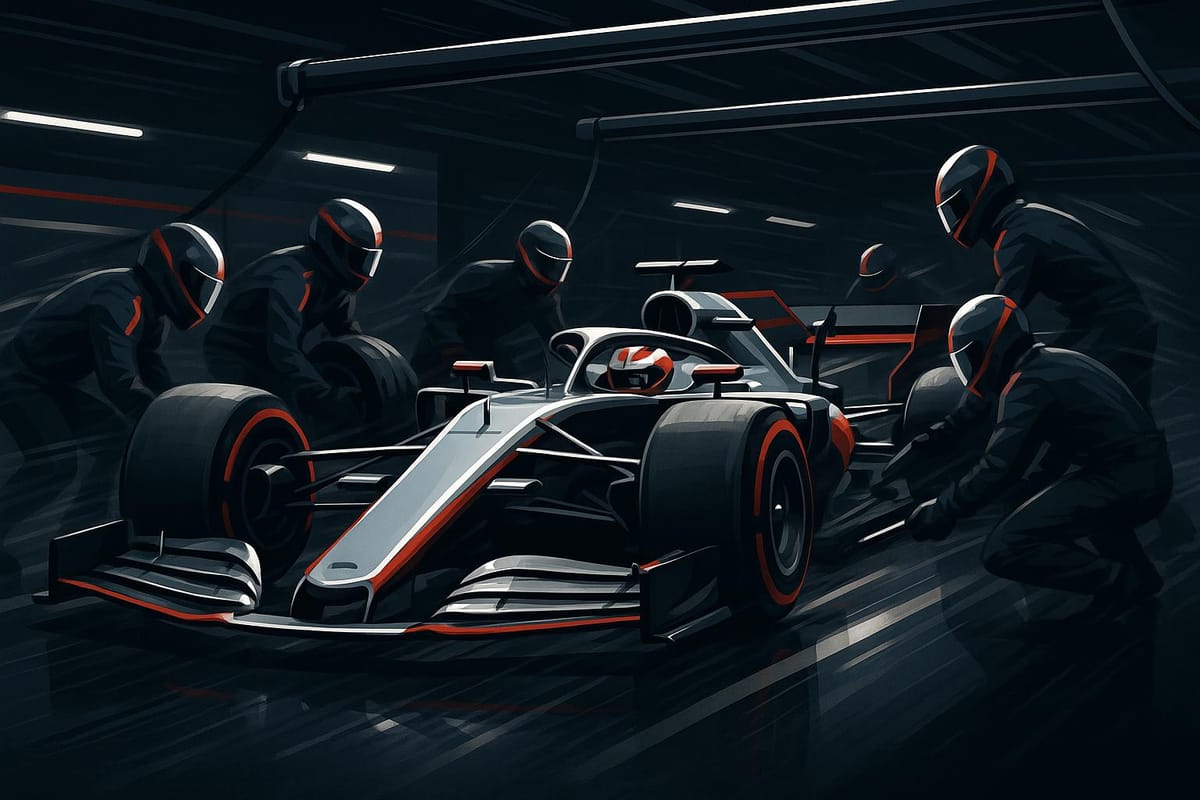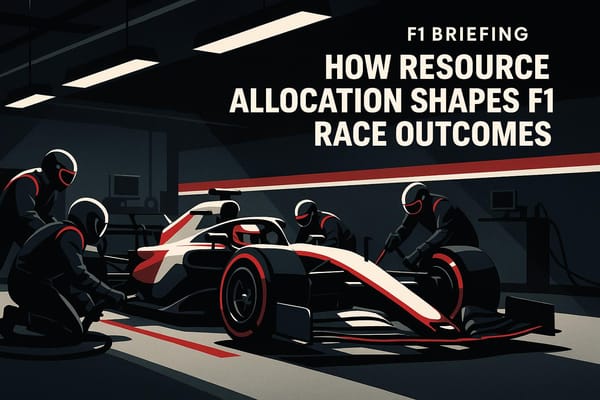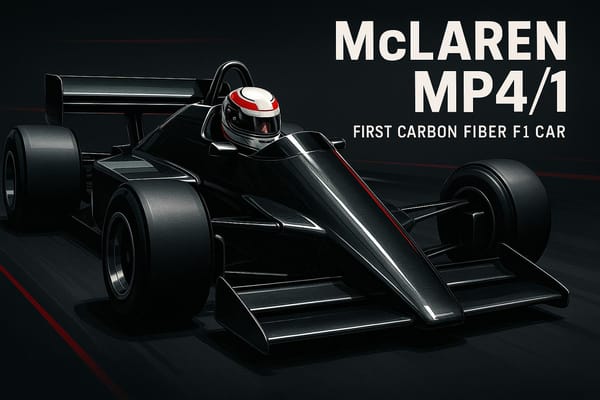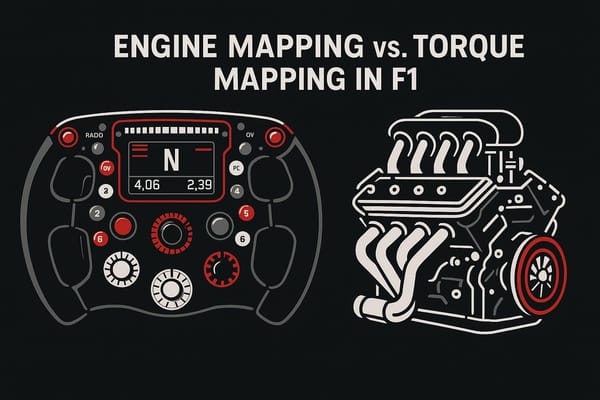How Pit Stops Change Race Outcomes
Explore how pit stop strategies in Formula 1, like undercuts and overcuts, can significantly influence race outcomes and team decisions.

In Formula 1, pit stops can make or break a race. Teams rely on two main strategies to gain an edge:
- Undercut: Pit earlier to use fresh tires for faster lap times and gain track position.
- Overcut: Stay out longer to maintain track position and capitalize on rivals’ pit stops.
Key factors influencing these strategies include tire wear, track conditions, and timing. The undercut works best on high tire-wear tracks, while the overcut shines on circuits with minimal tire degradation. Success depends on precise timing, clean air, and managing tire performance.
| Strategy | Undercut | Overcut |
|---|---|---|
| Track Position | Immediate gain with fresh tires | Delayed gain by staying out longer |
| Tire Management | Short stint, focus on speed | Longer stint, careful tire preservation |
| Risk Level | Medium – traffic-dependent | High – relies on tire durability |
Pit stops are more than just a pause - they’re a critical part of race strategy that can decide victory or defeat.
How Do F1 Teams Decide Their Pit Strategy?
1. Undercut Pit Stops
The undercut is a strategy where teams pit early to gain track position by taking advantage of fresher tires. The idea is simple: new tires can deliver faster lap times, helping drivers make up for the time lost during the pit stop.
Several factors determine how well this tactic works:
- Tire Performance Window: New tires tend to provide a noticeable speed boost, especially in their initial laps.
- Track Position: This strategy shines on tracks where overtaking is tough.
- Traffic Management: Drivers need clear air after their stop to fully exploit the new tires' performance.
When executed perfectly, the undercut allows a driver to leap ahead of competitors by setting quicker lap times on fresh tires. But it’s not without risks - getting stuck in traffic after the pit stop can quickly erase any gains.
"The undercut relies on the ability of the driver on new tires to set significantly faster lap times immediately after the pit stop. This advantage needs to be large enough to offset the time lost during the pit stop itself", explains the F1 Briefing analysis team.
To pull off a successful undercut, teams focus on two main factors:
- Timing Precision: The best moment to pit is when tire wear starts slowing lap times significantly. Teams must weigh the benefit of fresh tires against the risk of stopping too early.
-
Track Characteristics: The effectiveness of the undercut depends heavily on the circuit’s layout and conditions.
Track Element Impact on Undercut Circuit Length Longer circuits mean more time lost during pit stops Surface Grip High-grip tracks enhance the performance of new tires Pit Lane Length Shorter pit lanes reduce overall time loss
These elements play a crucial role in determining how well the undercut works. Up next, we’ll take a closer look at how the overcut offers a different approach.
2. Overcut Pit Stops
An overcut strategy involves staying out on the track longer while competitors head to the pits. The goal? Maximize track position by delaying your pit stop. This approach relies heavily on managing tire wear and anticipating how race conditions will unfold.
The success of an overcut depends on a few critical factors:
| Factor | Impact on Strategy | Ideal Conditions |
|---|---|---|
| Tire Management | Essential for maintaining speed | Tracks with slower tire wear |
| Track Position | Gains from having clear air | Open track after competitors pit |
| Surface Conditions | Influences tire degradation | Smooth tracks with moderate temperatures |
Overcuts work best on circuits with minimal tire degradation and cooler weather, which help prolong tire life. They also shine when rivals face traffic after their pit stops, giving the driver staying out a cleaner, faster track.
To pull off an overcut, drivers must maintain strong lap times on worn tires. This requires careful control of tire temperature, consistent driving, and smart positioning on the track. The balance between pushing for speed and preserving tire life is key to making this strategy pay off.
In short, while the undercut focuses on gaining an edge with fresh tires, the overcut relies on extending tire performance and timing the pit stop perfectly.
Strategy Results Comparison
Let's break down how undercut and overcut strategies affect race outcomes by examining key performance metrics.
| Strategy Element | Undercut | Overcut |
|---|---|---|
| Track Position Gain | Provides an immediate edge with fresh tires | Gains come later, depending on having clear track space |
| Tire Management | Shorter first stint with fresher tires boosting pace | Requires extending the stint and managing tire wear carefully |
| Risk Level | Medium – depends on traffic conditions | High – tire degradation adds uncertainty |
| Best Conditions | Best on tracks with high tire wear, where fresh tires make a big difference | Works well on tracks with low tire wear, allowing position gains without major performance loss |
This table highlights how each strategy performs under different conditions.
| Performance Factor | Undercut Impact | Overcut Impact |
|---|---|---|
| Pit Lane Delta | Gains an edge from a quick pit lane delta | Timing and competitor pace are more critical |
| Traffic Conditions | Sensitive to traffic and backmarkers | Benefits from clean air after rivals pit |
Key Variables That Influence Strategy Success
Several factors play a role in determining whether an undercut or overcut will work better on race day:
- Track Characteristics: High tire wear circuits favor undercuts, while tracks with lower wear and limited overtaking opportunities align better with overcuts.
- Race Position: A driver's position in the race can dictate how flexible their strategy can be.
- Weather and Tire Degradation: Hot conditions make undercuts more effective but riskier due to faster tire wear. Cooler weather often suits overcuts.
To make the most of either approach, teams need to focus on timing. Monitoring lap times, tire wear, and track position is essential for making split-second calls that could decide the race.
Conclusion
Timing, tire management, and track conditions all come together to shape the success of pit stop strategies. The nature of the track itself is a major factor - tracks with high tire wear often reward undercut strategies, while those with lower wear rates can make overcuts more effective.
To execute a winning strategy, teams need to stay on top of several real-time factors, including:
- Current position and gaps to competitors
- Traffic patterns and available clear air
- The balance between tire durability and the pace required to stay competitive
These elements heavily impact race results. The most effective teams are those that stay flexible, constantly evaluating the situation and tweaking their tactics as the race progresses. It’s this ability to adapt that makes pit stop strategies such a crucial part of achieving success on the track.
FAQs
What factors influence a team's decision to use an undercut or overcut strategy during a race?
Teams decide between an undercut or overcut strategy by analyzing multiple factors, including tire wear, track conditions, and the performance of rival cars. An undercut involves pitting earlier to gain time on fresher tires, while an overcut delays the pit stop to capitalize on clear air or better lap times before changing tires.
The choice often depends on real-time data, such as lap times, tire degradation rates, and the likelihood of traffic after a pit stop. Teams also consider track-specific characteristics, like how quickly new tires warm up or how difficult overtaking is. Ultimately, these strategies are a calculated gamble aimed at gaining a competitive edge during the race.
How do pit stop strategies affect race results, and what risks do teams face when making these decisions?
Pit stop strategies play a critical role in determining race outcomes in Formula 1. Teams must carefully balance factors like tire wear, fuel loads, and track conditions to decide the optimal timing for a stop. A well-executed pit stop can provide a strategic edge, such as undercutting a competitor or maintaining a lead. However, these decisions come with significant risks.
Mistimed stops can lead to losing track position, while errors during the stop - like a slow tire change or miscommunication - can cost precious seconds. Additionally, choosing the wrong tire compound for evolving track conditions can hinder performance. Teams must anticipate variables like weather changes, safety cars, and competitor strategies to minimize these risks and maximize their chances of success.
How do track conditions and weather impact undercut and overcut strategies in F1?
Track characteristics and weather play a crucial role in determining the success of undercut and overcut strategies in Formula 1. For example, an undercut - where a driver pits earlier to gain time on fresh tires - works best on tracks with high tire degradation, as competitors on older tires lose significant lap time. Conversely, an overcut - delaying a pit stop to push harder on worn tires - can be effective on circuits where tire wear is minimal or lap times improve as fuel loads decrease.
Weather conditions also heavily influence these strategies. In cooler temperatures, tires may take longer to reach optimal performance after a pit stop, potentially negating the advantage of an undercut. Rain or mixed conditions add another layer of complexity, as teams must balance tire choice and timing to adapt to rapidly changing grip levels. Understanding these variables is key to executing the right strategy during a race.




